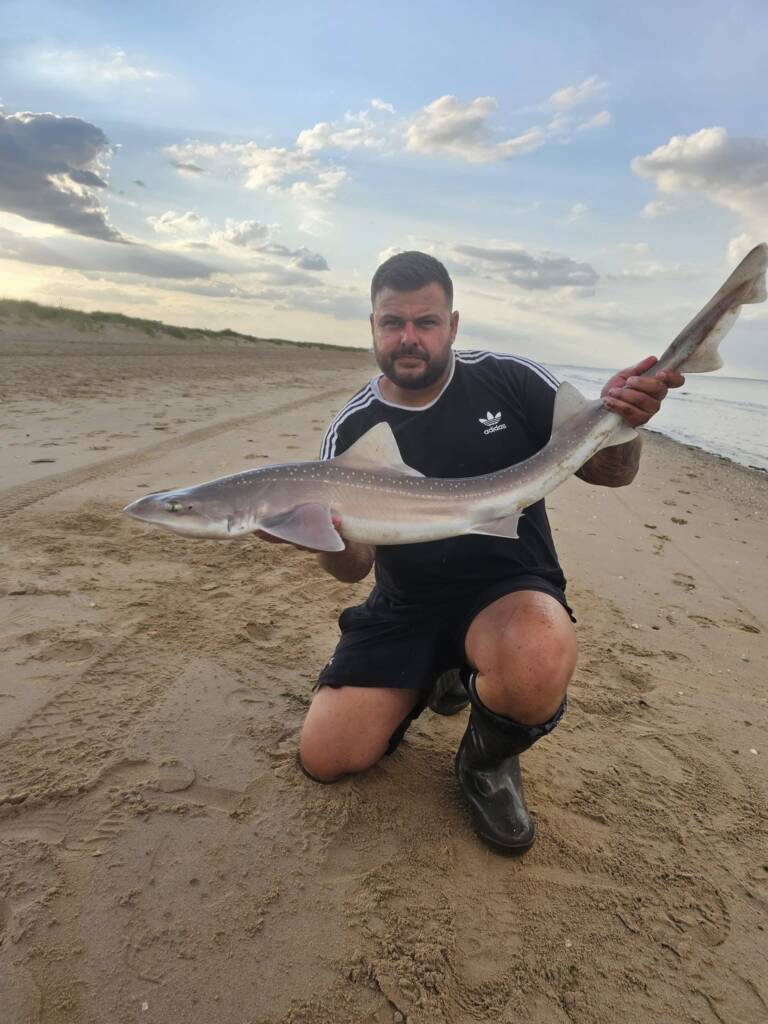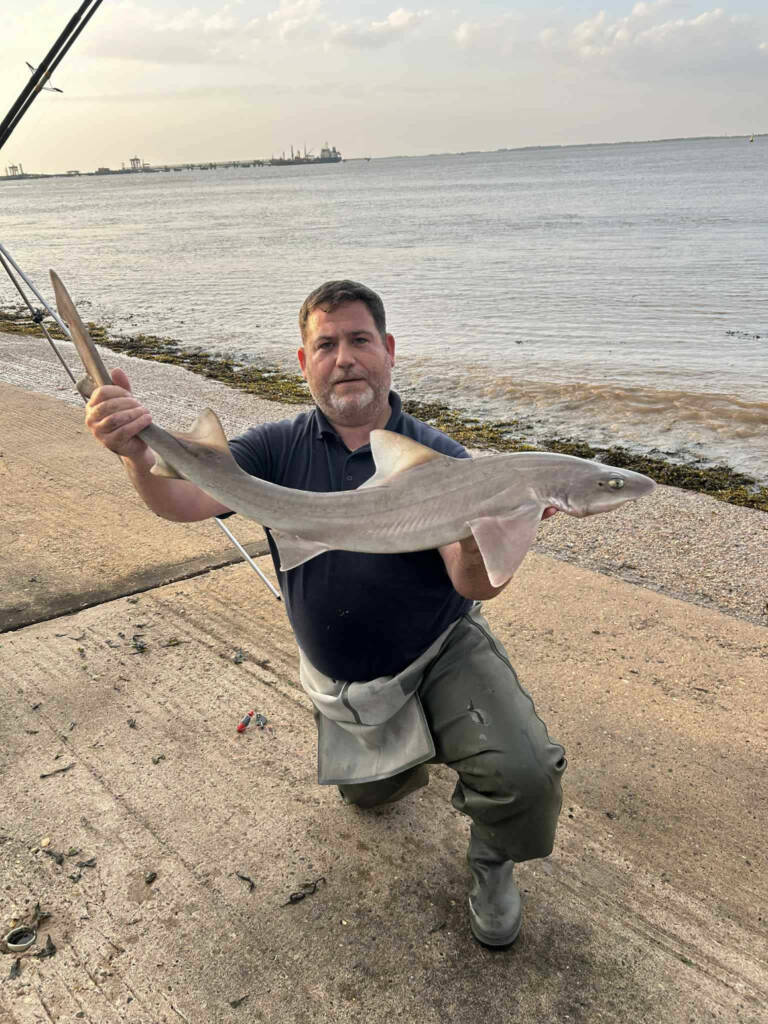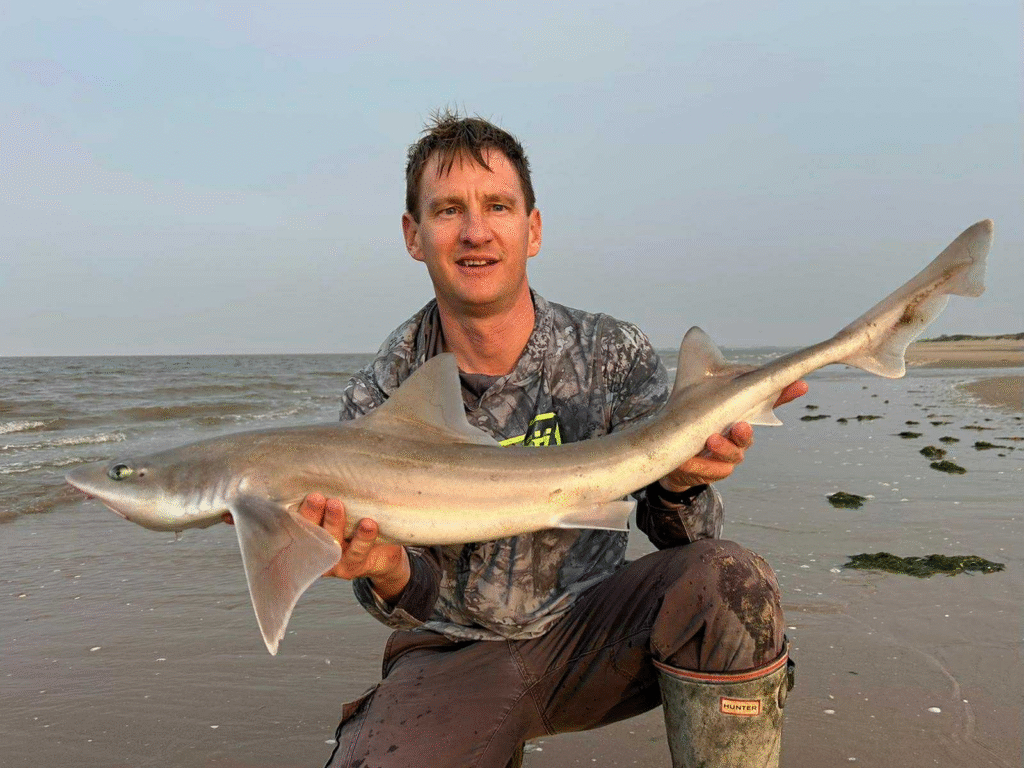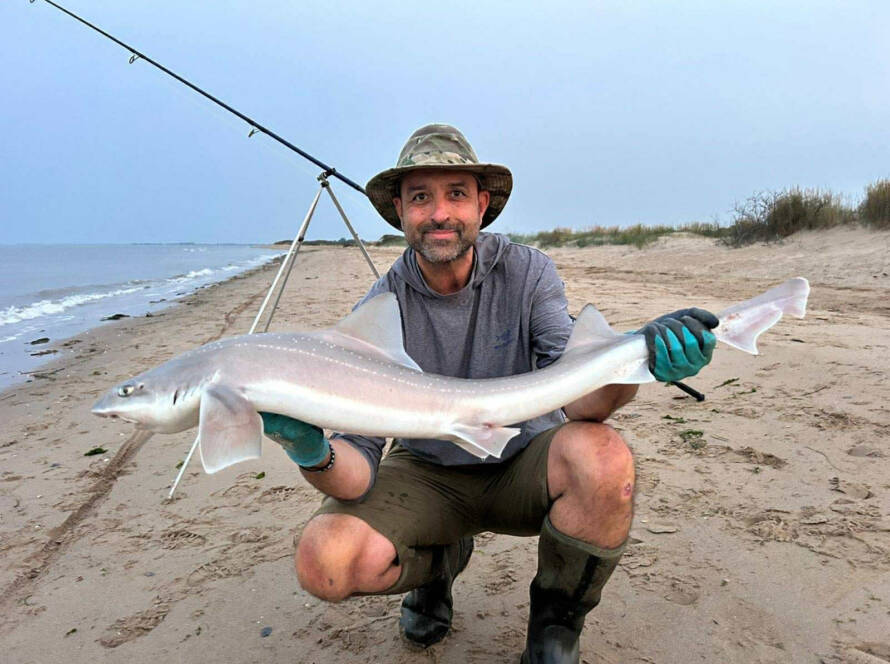Smoothhound fishing is a firm favourite among shore anglers. Here’s a look at the key tackle and tactics you’ll need to target these powerful, hard-fighting fish.
Best Times and Conditions
May through to August are prime months for shore-caught smoothhound. The most productive sessions often coincide with bigger rising tides, with mixed rough-to-rough ground beaches producing the best results. Smoothhound don’t favour overly rough seas, but they feed well in a steady surf with a consistent onshore wind.

Rods
For rough ground, choose rods rated for 4–8oz casting weight. Models in the 13–14ft range not only provide extra casting distance with less effort, but also allow you to guide fish over and around snags when they are close in. These rods also work well on cleaner beaches with a lively surf and occasional floating weed.
Examples:
Reels
A popular choice is an 8000/12000-size fixed spool reel holding plenty of mainline. Look for at least five ball bearings for smoother performance under load, plus a slow oscillation system for perfect line lay and maximum casting distance. For two-piece rods, a 6500-size multiplier reel is ideal.
Examples:

Mainline and Leader
- Clean ground (fixed spool): 30lb braid for better bite detection and longer casts due to its thin diameter.
- Rough ground:
- 50lb braid for mixed rough.
- 18–25lb mono for heavy rough, offering better abrasion resistance (but less casting distance).
Always use a casting leader:
- For braid, attach an 80lb braid leader long enough for eight wraps around the reel, through the guides, plus 3–4ft past the tip.
- For mono, use around 18lb mainline with a 60lb shockleader.
Examples:
Rigs
A pulley rig is ideal over rough ground as it lifts the lead away from snags once a fish is hooked.
We supply a wide range of pre-made rigs supplied by Mikes Rigs
See our Rigs Section
Leads
- Clean/mixed ground: Grip leads to keep bait anchored.
- Rough ground: Plain leads sit in rock gaps; a weak link setup can save rigs.
Weak link setup: Use a Casting Snap Link (clip up), attach 15lb mono between the snap and lead eye. Cast with the lead clipped up—on impact, it drops free and hangs by the weak link, breaking away if snagged.
Examples:
- Shorecast Gripaway Leads
- Shorecast Medium Tail Beachbomb

Baits
The top baits are Peeler Crab and Hermit Crab—everything else is second best.
- Peeler crab: Peel shell, halve the body, slide on hook, bind into sausage shape. For picky fish, leave legs on one half and mount leg-side up.
- Hermit crab: Hook through underside of sack, bind remove legs and claws and bind to hook.
- Squid: Remove cartilage, mount tail-first, fold head/tentacles under body, bind along length.
Lugworm and ragworm take the odd fish but are far less effective.
Tactics
- On shallow beaches, use braid to increase casting range, then walk back letting out line as the tide floods to place baits further out.
- Target gullies, sandy dips, rough patches, and small channels.
- Change baits every 20 minutes for maximum scent attraction.
- Bites are hard pull-downs—keep steady pressure and angle rod to steer fish from snags also setting your drag on your reel.






